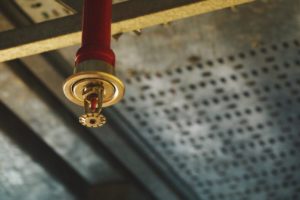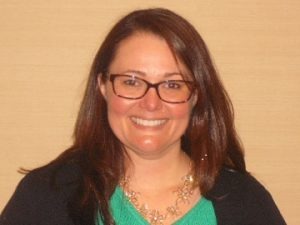Fire Safety and Evacuation Plans for Senior Care Facilities

How to protect your staff and residents in case of fire.
In the small hours of September 25, 2003, a fire broke out on the second floor of the NHC Healthcare Center nursing home in Nashville, Tennessee. Eight women between the ages of 76 and 96 perished (the 96-year-old was the mother of the district fire chief) and 16 others were critically hurt. The building, which had been constructed in 1991, had just one functional sprinkler — as required by the codes in existence when the facility was built.
“Most of the 116 residents had to be carried out by firefighters or rolled to safety in wheelchairs because few patients could walk and the elevators were knocked out of service,” the New York Times reported.
Since then, fire safety rules have become stricter across the country, but the threat of fire and its deadly consequences remains. Fireline, a Maryland-based fire safety company, reports that every year, “at least 16 people die in nursing home fires and 130 people suffer from physical injuries.”
Further, the National Fire Protection Association, a national organization that publishes and revises fire codes and standards, reports 48% of all structural fires in health care facilities from 2011 to 2015 occurred in skilled nursing facilities. The kitchen is, unsurprisingly, the source of two-thirds of them.
Fire remains an ongoing risk in facilities where oxygen tanks may be in abundance and older adults may be less able to react quickly to a fire. But with some common sense prevention tools and a bit of planning and training, you can reduce the risk of a fire becoming a tragic event.
Prevention Tools
There are a few simple tools that every facility should have to help prevent and manage fires. These include:
- Fire alarms
- Sprinkler systems
- Fire extinguishers
- Kitchen systems
These measures are relatively easy to install, but you must keep them in working order. It’s the responsibility of facility owners and the management team to ensure that fire protection tools are in place and functional. These tools require regular testing and maintenance to function properly.

Robert Solomon, fire protection engineer at NFPA
When it comes to fire extinguishers, you need to exercise some caution, says Robert Solomon, a fire protection engineer with the NFPA. “Fire extinguishers are always a tricky thing,” he says. They should be installed in places that are predominantly accessible by the staff, rather than in resident rooms. “We’re not going to put them in resident rooms. We put them in an open area in the corridor or nurses’ station or in family waiting spaces.”
This is because using a fire extinguisher properly takes some training. “If the user is not trained, they might make the fire worse or push it into another area,” Solomon explains.
Fire Safety Plans
Solomon says that fire protection begins in the design phases of your facility. “We use the same design criteria to design a nursing home as a hospital.” This means installing automatic sprinkler systems and incorporating so-called smoke compartments that help contain a fire and prevent it from spreading to other rooms and floors.
Ideally, this leads to residents being able to stay in their rooms, even if a fire does break out. “A large percentage of the population are going to be incapable of self-preservation,” Solomon notes. This means that your employees may be called on to use special techniques to evacuate residents.
But Solomon says evacuation should actually be a last resort. “One of the things we strive not to do in a facility like a nursing home is to get to a point where we have to evacuate anybody. Planning is centered around the idea of ‘defend in place.’”
That said, it’s important to have a plan for how to relocate residents in the event of a fire. Anyone who’s in the area where the fire has broken out should be moved to the next smoke compartment.
In some cases, this may mean staff will need to physically move residents who can’t move themselves. “They may need to be relocated or evacuated on a bed or using a blanket drag,” in which the resident is laid on a blanket that’s on the floor and carefully dragged across the floor to safety by pulling the blanket. “In other cases they might need a walker or a cane and need a staff person to assist them.”
In any event, individuals who are less mobile will need more time to get to safety, and staff need to be trained in how to best assist them. “Facilities have to be prepared for all of those scenarios,” Solomon says.
You’ll also need to make sure you have enough staff on site at any one time to adequately care for residents in the event of a fire. “Residents who have no ability to ambulate on their own are 100% dependent on staff” to get to safety, Solomon says.
Elements of the Plan
Although there may be facility-specific items in your fire safety plan, a few common elements should be part of every plan. These include:
- Staff training. Every good fire safety plan includes periodic training for staff members.
- Resident training. Residents need to be trained in how to react in case of a fire. This training should happen as soon as a new resident arrives to your facility so there’s no gap in knowledge.
- Regularly practicing the plan can help everyone become more comfortable with how to respond in an emergency. Each state stipulates how many drills you need to hold each year, but generally speaking, practice makes perfect. “The facility is responsible for developing the plan and doing the drills,” Solomon says. Some have a safety committee coordinate the quarterly drills for all shifts,” while other facilities may call on a consulting company to assist with developing its plan, training residents and employees, or executing the drills.
- Written evacuation plan. Writing down the plan, complete with evacuation protocols and a floor plan of the facility, is important. This plan should be developed for the entire facility and should be reviewed and updated at least annually.
Follow the Code
The Life Safety Code, also known as NFPA 101, is a code that facilities have to comply with in order to receive reimbursement from the Centers for Medicare and Medicaid Services. It covers both existing and new buildings and is updated every three years, so you’ll need to keep pace with changes as they’re released.
If you’re unclear on whether your facility is in compliance, consider hiring a fire safety consultant for advice. It’s also a good idea to connect with the local fire department to review your plan. They may have insight about local ordinances and other concerns specific to your municipality and facility.

Elaine K. Howley is a freelance journalist for various publications. An award-winning writer specializing in health, fitness, sports and history, her work has appeared in numerous print and online publications, including U.S. News, AARP.org, espnW, SWIMMER magazine and Atlas Obscura. She’s also a world-record holding marathon swimmer with a passion for animals and beer. Contact her via her website: elainekhowley.com.
Related Articles
Topics: Design , Executive Leadership , Facility management , Featured Articles , Housing , Operations , Regulatory Compliance , Resident Care , Risk Management , Senior Environments , Training











